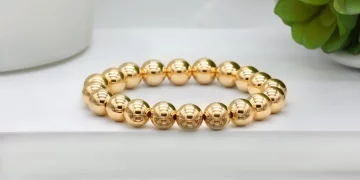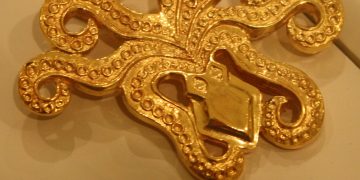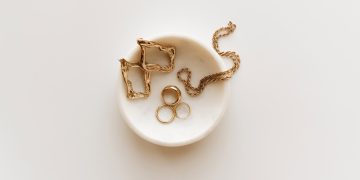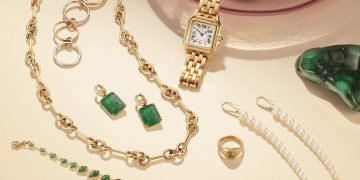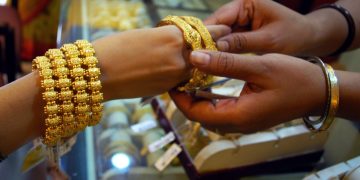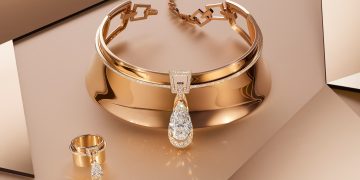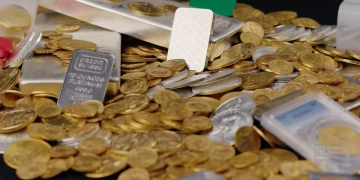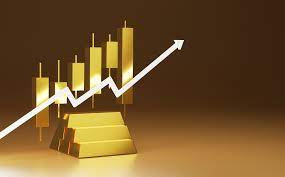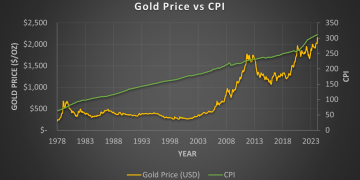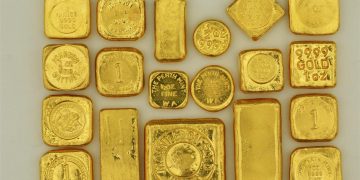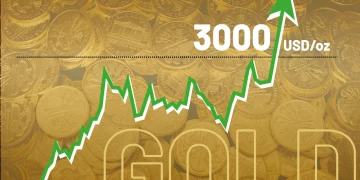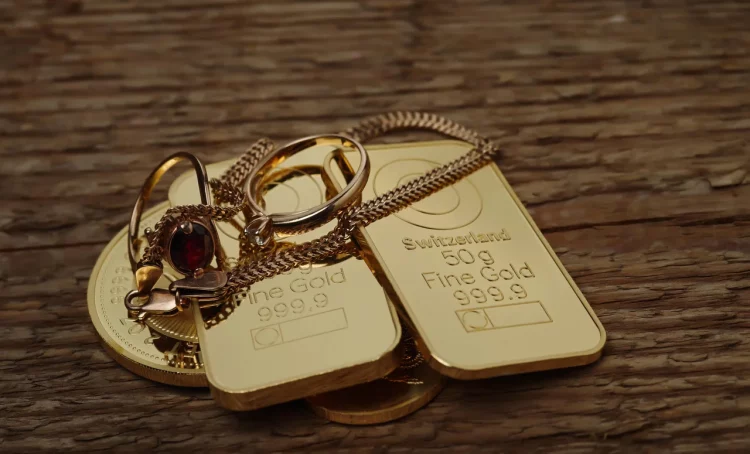Gold has long been admired not only for its beauty but also for its intrinsic value. Gold jewelry, as an investment, carries a unique appeal: it combines the allure of luxury with the financial stability of a precious metal. While many investors choose to buy gold in its pure form as bullion or coins, gold jewelry offers an alternative that blends artistic craftsmanship with financial potential. In this article, we explore expert insights into the investment potential of gold jewelry, the factors influencing its value, and its future prospects as an asset class.
Expert Insights into the Investment Potential of Gold Jewelry
Gold jewelry has proven to be more than just a symbol of wealth and prestige. It holds significant investment potential, particularly in times of economic uncertainty. Experts argue that investing in gold jewelry can provide a dual benefit: the appreciation of the gold content itself and the added value of craftsmanship, design, and rarity.
The Role of Gold Jewelry as a Tangible Asset
Unlike stocks, bonds, or other financial instruments, gold jewelry is a tangible asset that retains value through time. While the primary value of gold jewelry lies in the weight and purity of the metal, the craftsmanship and design also contribute significantly to its investment appeal. High-quality gold jewelry from renowned designers or luxury brands tends to appreciate in value over time, particularly when rare or limited edition pieces are involved.
Additionally, gold jewelry’s intrinsic value is influenced by the price of gold in the global market. As gold prices increase, the value of gold jewelry rises as well. This makes gold jewelry a relatively stable and reliable investment, especially when the broader economy faces inflation or currency devaluation.
The Intersection of Art and Value
Gold jewelry is an intersection of art and value, where both the creative process and the material contribute to its worth. High-end jewelry pieces, particularly those with intricate designs or historical significance, are often seen as collectible investments. These pieces are not just valuable for their gold content but for their artistic expression. As such, their value can appreciate even more rapidly than standard gold jewelry due to their rarity and desirability among collectors.
The increasing trend toward personalized and custom-made jewelry also impacts its investment potential. Consumers are seeking unique, one-of-a-kind pieces that hold personal meaning, which in turn increases the demand and market value for custom gold jewelry. As consumer preferences shift toward individual expression, the investment value of unique gold jewelry items is likely to rise.
How Changes in Consumer Preferences Impact Gold Jewelry Prices
The value of gold jewelry is not solely driven by the fluctuating price of gold; changes in consumer preferences play a crucial role in determining its market value. Over time, shifts in societal trends, economic conditions, and cultural attitudes have influenced what types of gold jewelry are in demand. The following factors highlight the ways in which consumer preferences shape the price dynamics of gold jewelry.
Cultural Shifts and Fashion Trends
Gold jewelry has always been subject to evolving fashion trends. The styles that are popular today may not have the same appeal tomorrow, but this does not necessarily mean that gold jewelry loses value. In fact, certain styles, such as vintage or antique pieces, often become more valuable over time as they gain cultural significance and rarity. For example, during periods of economic uncertainty, there is often a return to classic designs, such as simple gold chains or traditional bangles, which are seen as timeless investments.
As fashion cycles change, consumer demand for specific types of jewelry also fluctuates. Designers and jewelers must adapt to these trends to remain relevant in the marketplace. For instance, the rise of minimalist jewelry, which emphasizes simplicity and understated elegance, has contributed to a surge in demand for smaller, lighter gold pieces. Conversely, when more elaborate jewelry styles return to fashion, demand for statement pieces made from gold may increase.
Sustainability and Ethical Considerations
Another significant shift in consumer preferences is the growing demand for sustainable and ethically sourced gold jewelry. Consumers are increasingly aware of the environmental and social impacts of gold mining, prompting the rise of ethical sourcing practices within the industry. As a result, gold jewelry that is certified as ethically mined or recycled is gaining traction among conscientious buyers.
This shift toward sustainable practices impacts the market in two ways. First, it encourages consumers to value jewelry that comes with certifications and guarantees about its origins. Second, it elevates the market value of jewelry from reputable sources, as buyers are willing to pay a premium for pieces that align with their ethical values. In the long run, these preferences are likely to influence the overall price structure of gold jewelry.
The Appeal of Customization and Personalization
In recent years, there has been a notable rise in demand for custom-designed gold jewelry. Consumers are no longer simply purchasing off-the-shelf pieces; instead, they seek personalized items that reflect their unique style and preferences. This trend is particularly evident in the high-end jewelry market, where consumers are willing to invest in custom pieces that showcase their individual taste.
As a result, jewelers who offer bespoke services are seeing an increase in demand, and the prices of custom-made gold jewelry are rising accordingly. These pieces often appreciate in value over time due to their uniqueness and the craftsmanship involved in their creation. Investing in personalized gold jewelry can offer substantial returns, especially when the pieces are from established designers or luxury brands with a proven track record.
Factors Influencing the Longevity of Gold Jewelry Investments
While the potential for profit in gold jewelry is significant, its longevity as an investment depends on several factors. A number of external and internal elements influence how gold jewelry performs as an investment over the long term.
Quality of Craftsmanship
The quality of craftsmanship is one of the most important factors that contribute to the longevity of gold jewelry investments. Jewelry that is well-crafted, with attention to detail and precision, is more likely to retain or increase its value over time. High-quality pieces are more durable, and their intricate design adds to their appeal, particularly for collectors.
Expertly crafted jewelry, particularly from renowned houses like Cartier, Tiffany & Co., or Van Cleef & Arpels, tends to maintain its value due to the reputation of the brand and the skill of the artisans behind the pieces. For investors, purchasing pieces from established names can increase the likelihood of a long-term return on investment.

Rarity and Limited Editions
The rarity of a piece of jewelry plays a significant role in its investment potential. Jewelry that is produced in limited editions or as part of a special collection can see significant price appreciation over time. Items with historical significance or those created during a specific period of design innovation are often highly sought after by collectors.
Investors should seek out jewelry that is either unique or part of a limited run, as these pieces are more likely to hold or increase their value. Additionally, vintage gold jewelry from iconic designers often fetches higher prices in the resale market due to their scarcity and desirability.
Market Trends and Economic Conditions
The broader economic climate plays a role in determining the value of gold jewelry as an investment. During times of economic prosperity, consumers may spend more on luxury items, which increases the demand for high-end gold jewelry. Conversely, during economic downturns, consumers may be more cautious about spending, leading to a decrease in demand for non-essential items.
Gold itself is often viewed as a hedge against inflation and economic instability, and this extends to gold jewelry. During periods of inflation, jewelry made from gold can maintain or even increase its value, making it a relatively safe investment. However, during times of economic boom when other investment opportunities may be more lucrative, gold jewelry might experience a decline in relative demand.
Predictions for the Future of Gold Jewelry as an Asset Class
The future of gold jewelry as an investment class looks promising, with several factors contributing to its continued appeal. Experts predict that as global economic uncertainty persists, the demand for gold jewelry will remain strong, driven by a combination of cultural shifts, technological advancements, and growing awareness of sustainability.
Growth of the Luxury Market
The luxury goods market, including gold jewelry, is expected to continue expanding in the coming years, particularly in emerging markets like China and India. As these economies grow and middle-class wealth increases, more consumers will have the means to purchase high-quality gold jewelry, boosting demand and driving up prices.
Technological Advancements and Customization
The future of gold jewelry will also be shaped by technological advancements. The rise of 3D printing and digital design tools is enabling consumers to create personalized, one-of-a-kind pieces of jewelry. As demand for customization increases, more jewelers will offer tailored services, driving the value of bespoke gold jewelry.
Increased Focus on Sustainability
As sustainability becomes an even greater priority for consumers, ethical and responsibly sourced gold jewelry will likely become more valuable. The shift toward eco-conscious consumerism will elevate the importance of transparent sourcing and recycling in the gold jewelry industry, potentially driving up the market value of sustainable pieces.
Conclusion
Gold jewelry represents a unique blend of artistry, luxury, and financial value. As an investment, it offers significant potential, especially for those who understand the factors that drive its market value, such as craftsmanship, rarity, consumer preferences, and broader economic conditions. By paying attention to these elements and predicting how they may evolve, investors can make informed decisions about their gold jewelry purchases, ensuring that their investments retain or increase in value over time.
Gold jewelry is not just a beautiful accessory—it’s a tangible asset with long-term investment potential. By combining the timeless appeal of gold with the artistry of skilled craftsmanship, gold jewelry remains a smart investment in the ever-evolving luxury market.

